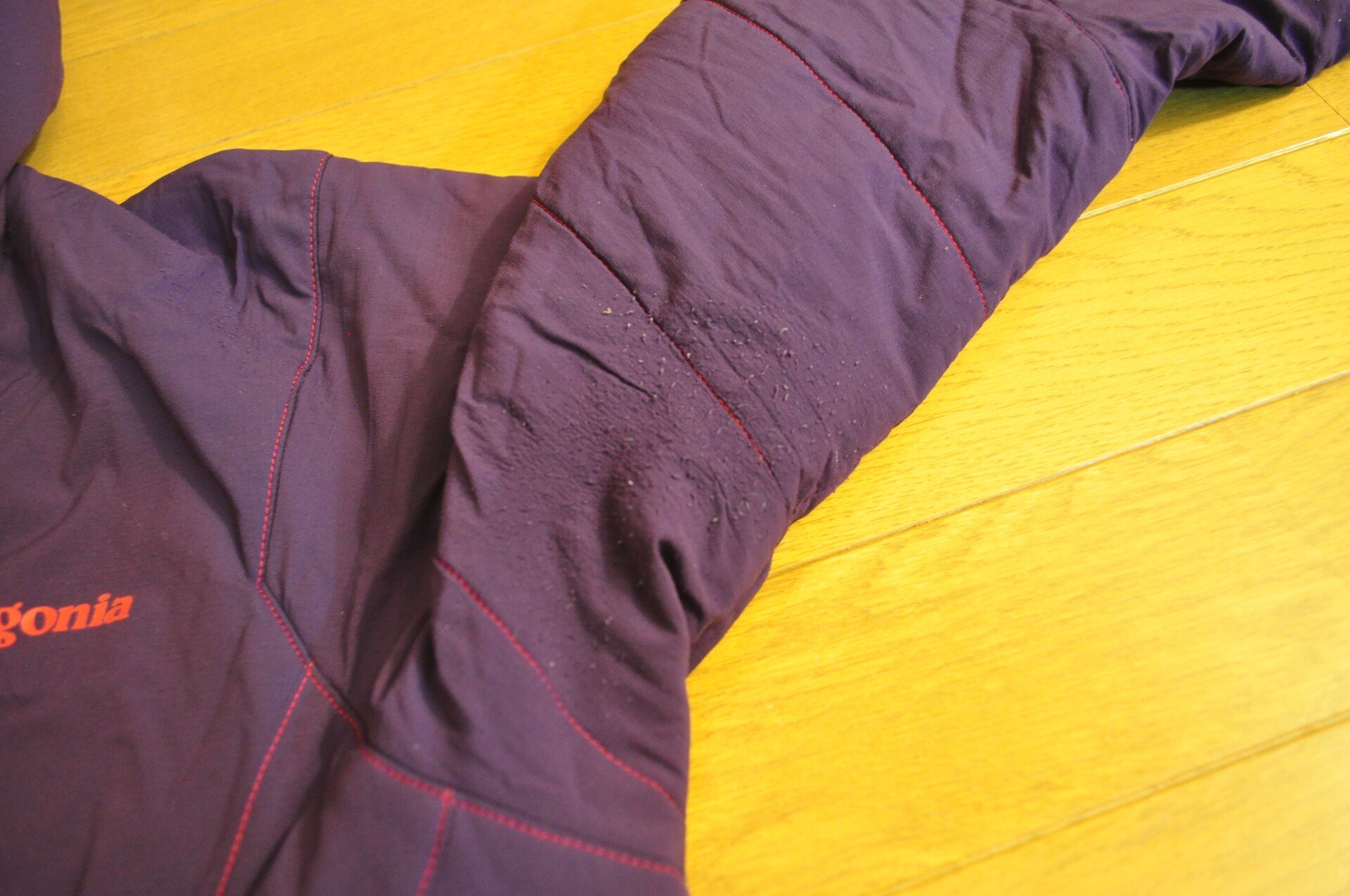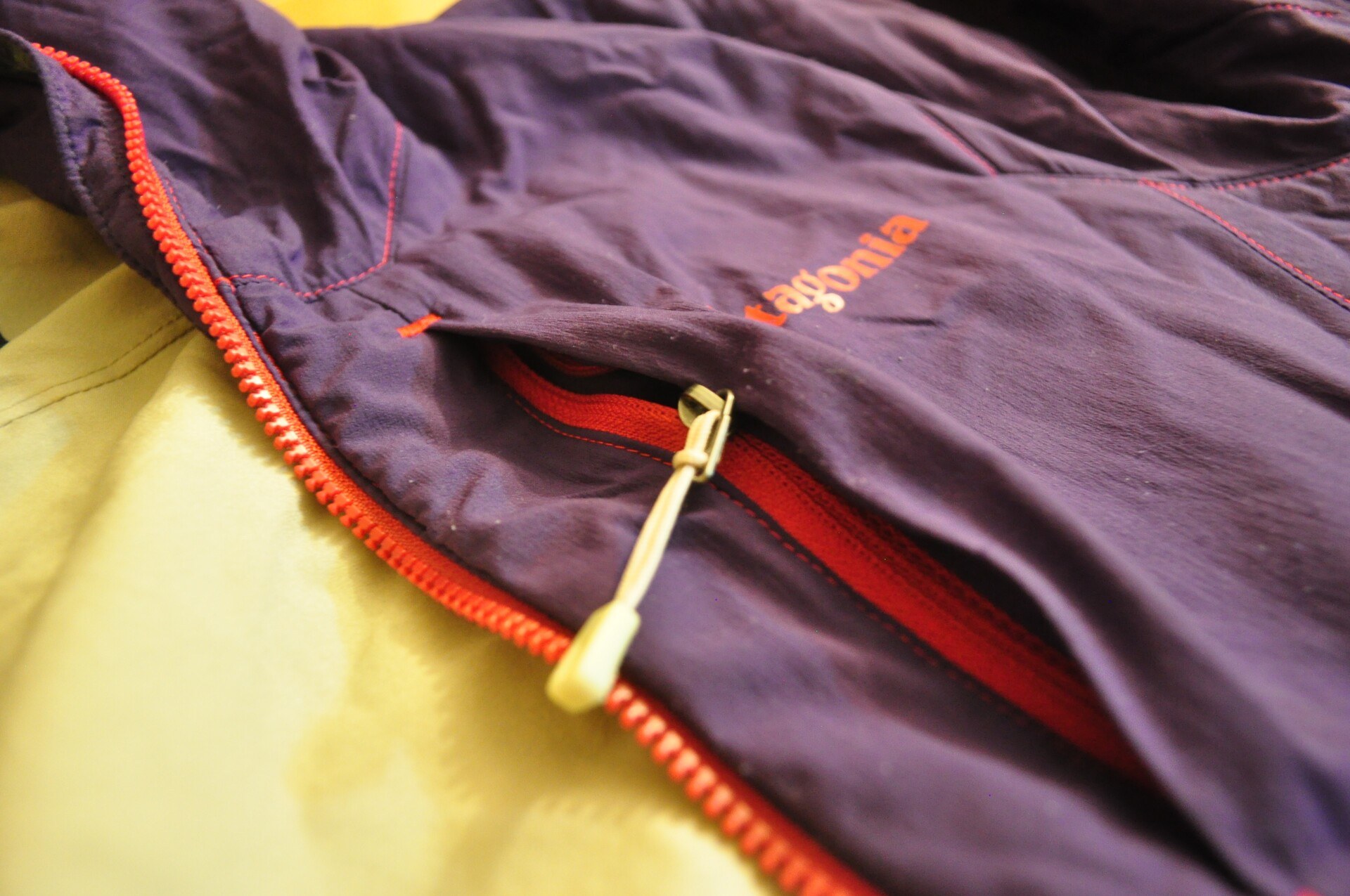Patagonia Nano-Air Hoody Review

THE TL;DR
- THE GOOD: weighs very very little, keeps your body at the ‘just right’ temperature, excellent mobility and comfort.
- THE BAD: some niggles about the outer fabric and construction of the hood.
- THE RECOMMENDATION: if you do sports over a variety of seasons and are also looking for a great jacket to wear outside of sports situations, and you have the money to spend, buy this jacket immediately I am not fucking kidding.
Author's note, 8/10/23: I still have this jacket, and wear it regularly. It still keeps the cold out, and a bit of the wind too, even when it's wet. I feel as comfortable wearing it on a plane as I do on a run. Looks like they still sell it.
THE REVIEW
So I was reading the Nano-Air Hoody’s page on patagonia.com to try and find a place to start this review, and they do this thing, I guess, where they write a sentence about the garment and feature it right under the picture of the thing, to sort of give you an overview, and the Nano-Air Hoody’s goes like this:
“An insulation breakthrough: The Nano-Air® Hoody featuring FullRange™ insulation is warm, stretchy and so breathable, you can wear it for the entirety of any highly aerobic start-stop mission in the mountains.”
It’s easy for me to gloss over stuff like this. The little ‘registered’ circle-R and the superscript TM are too corporate (where corporate is the antonym of honest); words like ‘breakthrough’ and ‘so breathable’ are so buzzwordy in the outdoor gear industry that they almost tip you off like, ‘don’t bother reading this part, we’re just trying to hype up people that don’t read reviews that often’ (of course this leads to a quick piece of confusion: who’s going to fall for words like this but also be heading out on “highly aerobic start-stop mission[s]”? Wait.).
I’m actually wearing my Nano-Air Hoody right now–I figured it might inspire me. I bought it in October 2014 and I’ve probably worn it like 300 days since then (for reference it’s been maybe 480 days since then at the time of writing this). I’m wearing it over a t-shirt, and I’ve pushed the sleeves up to just below my elbows. The cuffs are stretchy and never seem to lose their stretch, which is one of the many small miracles of this jacket. But reading that Patagonia hype-text, scoffing, looking down my nose at it, suddenly it makes sense.
This jacket was more or less my introduction to high-tech insulation, which, before the Nano-Air came out, was basically shorthand for ‘down or synthetic down’. Which, if it’s any good, is probably real puffy and not super stretchy and not great for breathability either, what with down being not such good friends with moisture. But so it was only when I started trying other insulating jackets that I realized what Patagonia’s talking about up there–namely, a jacket that you can wear for the entirety of any highly aerobic activity (the stuff about ‘missions’ is kind of hype-ish and silly, and I hope Patagonia is being a little tongue-in-cheek here)–isn’t the norm, as far as insulation goes.
When I go out on a ‘mission’, here’s how it goes: I put on either one or two baselayers, depending on if I’m probably going to be cold or what. Then I put on my Nano-Air Hoody. Then I put on a shell if the weather looks bad. If the weather changes, I’ll put on or take off the shell; but other than that, nothing changes. The Nano-Air does exactly what it says it does: it stays on the whole time. If I get a little hot, I push the sleeves up and unzip the front. If I get a little cold, the sleeves come down, the zip goes up to my chin. Is it windy? Did I forget my hat? Up goes the hood. It’s so snug on my head it feels like a hat. Windy? Tighten down the cinches around the waist. When Patagonia released this jacket back in 2014, I feel like I remember them pushing this hashtag, #leaveiton. I don’t like feeling that I’m being marketed to, but there ya have it: I’ve left it on.
THE LIST OF SMALL MIRACLES
- The elastics don’t lose their stretch. I’ve got tons of long-sleeve tops with blown-out cuffs from pushing them up my arms. Patagonia uses Spandex in their elastic cuffs (my Synchilla Snap-T has them too) and it never loses its stretch. This is probably my favorite thing about them, even if they leave little marks on my arms when I’ve got the sleeves up all day.
- Speaking of stretch, the Nano-Air moves and stretches like a baselayer, which is to say that it doesn’t hinder the way you move at all. Need to reach something on the floor of your car? Bend over to adjust your ski boots? Reach for a hold that you can only go for since you’re 6’4”? No problemo. The jacket doesn’t bunch, it doesn’t ride up, it doesn’t pull on your shoulders.
- It weighs basically nothing. The website says it weighs 385 grams. Here are some things that weigh more than that: a baseball, a cellphone in a case, a paperback book, a can of beans. Do you have a Bluetooth keyboard? It weighs about that much. Do you have a liter of milk sitting around? That weighs as much as three of these jackets.
- Great pockets–there’s two at your hips and then two chest pockets. The chest pockets are great for your phone or some headphones or Voile straps or a pair of sunglasses. The jacket doesn’t have much structure to it so I don’t recommend putting heavier stuff in the upper pockets or the whole things gets sort of saggy. There’s more than enough room in the hip pockets for gloves and car keys and headlamps and stuff. Plus zippers on all of them means nothing falls out.
- Stays warm when it’s wet. This is a big deal. This jacket wicks like nothing else, so any moisture coming up from your baselayers gets pulled up through the jacket without compromising warmth. This has saved me a lot of trouble on more occasions than I want to count right now.
- On the other hand, it breathes enough to stay cool. I’m more than comfortable wearing this running, hiking, riding a bike, or ski touring. I genuinely don’t know how it does this, but it lets just enough warmth out. Just enough. I have wondered if there was some sort of thermoregulatory computer in it somewhere. There isn’t.
- It makes sense as a midlayer but also as a outer layer. The slim cut means you can put something over it, we’ve covered that already. But the stretch fit means that you can jam stuff underneath it as well–a big sweater, for example. The outer fabric is reasonably durable but quite thin–it’d be fine for storming bushes and crags but I wouldn’t recommend it for a job where friction or fire is a regular hazard.
- It’s both technical and casual. How do I put this? I wear it skinning around in the mountains and on long hiking trips and in my sleeping bag and when out running; but I also wear it when it’s a little chilly in my house, or over a flannel shirt when I go to work, or when I need to run across the street to the convenience store. I don’t look like a Nat Geo Adventurer of the Year, wearing technical garments in my own home–I just look like a guy in a zip-up hoody.
THE LIST OF SMALL COMPLAINTS
- Since it’s not down, it doesn’t compress that much, which isn’t ideal. It compresses, sure, but the FullRange™ stuff doesn’t pack down like down or synthetic down does. So don’t expect to stash this jacket in one of its own pockets. Then again, since I never take the jacket off, storage isn’t much of a problem.
- I’ve started to notice some pilling on the outside of the fabric. Mainly under the arms and on the outside of pockets that I usually have stuff in. Anywhere there’s friction. It doesn’t seem to be affecting the performance of the jacket, but it’s annoying.

- The DWR (durable water repellent finish) wears off after a week or two. Maybe you’re in the habit of refinishing the jacket every couple of weeks but I find that carrying a rain jacket with me works better for keeping the rain off. Don’t let anyone tell you that this is a rain jacket.
- When I put the hood up, my girlfriend tells me that I look like a condom. The students at the Japanese elementary school I teach at tell me I look like a ‘suspicious person’. The hood feels great but it looks pretty silly. I don’t know if other jackets’ low-profile hoods look any better, though.
- Because of the way that the jacket wicks sweat away from you, if you’re a heavy sweater–like I am–all of the stuff you keep in your pockets is going to get wet. Chest pockets especially.
- The other problem with wicking is, because the DWR rubs off pretty fast, the sweat sort of just soaks the outer layer. If you’re in subzero temperatures your jacket winds up just freezing. It doesn’t hinder movement–the fabric is thin enough that, when frozen, it’s still not rigid–but it prevents the jacket from drying until you get it warm again.
- This is starting to get petty but when it’s fully zipped, the hood kinda tugs on the collar and the collar curls and the zipper garage sticks into your neck, which can get irritating if you’ve got a big Adam’s apple like I do.
- The fabric around the pocket zippers sometimes gets stuck when you’re zipping up, especially on the chest pockets. It doesn’t damage the fabric and it’s pretty easily solved, but it can get troublesome if you only have one hand free.

THE CONCLUSION OF THE REVIEW
I feel like many of the cons I’ve written about here are silly annoyances, the solution to which is pretty simple. I don’t zip the neck up all the way most of the time; I carry a hat so I don’t have to use the hood; I use a razor to shave off the pilling. And on a daily basis, I’m still surprised and delighted by the jacket. And I don’t hesitate to use that word–it’s easy to look down on me as a materialist, but I do find real delight in this jacket. It’s light, soft, warm, durable; it does its job and gets out of the way. This is all I can ask for in an insulating jacket.
Previous
Climbing Naei-zan in Kami-Furano by snowshoe with Sam and a couple of buddies.